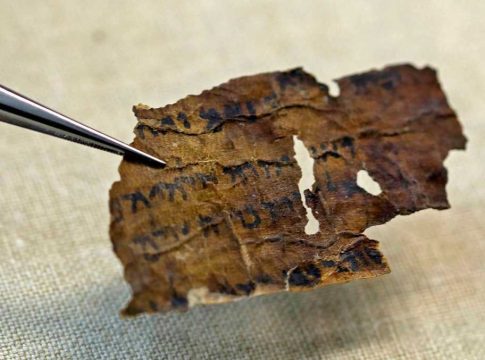New Study Suggests Dead Sea Scrolls Could Be Much Older
A groundbreaking study has redefined our understanding of the famed Dead Sea Scrolls, suggesting they may date back over 2,300 years—potentially making them up to a century older than previously believed. This exciting revelation comes from a collaborative effort led by Mladen Popović, a scholar from the University of Groningen, who combined traditional radiocarbon dating methods with innovative artificial intelligence techniques to date these ancient biblical manuscripts.
Unearthing Insights
Discovered in 1947 by Bedouin shepherds in the Judean Desert, the Dead Sea Scrolls include some of the earliest known texts from the Hebrew Bible. Since then, archaeologists have unearthed thousands of fragments from numerous manuscripts situated in caves across the West Bank. The content of these scrolls has dramatically shifted our perceptions of ancient Judaism and early Christianity.
Popović describes the scrolls as modern-day time capsules, providing an invaluable glimpse into the thoughts, writings, and readings of their time. "These texts allow us to study the Bible not just as a holy book but as a significant part of human cultural evolution," he explained.
The Mechanics of Dating
Traditionally, scholars estimated that the scrolls were created between the third century BCE and the second century CE. However, Popović’s team has presented evidence that some manuscripts may actually date back to the late fourth century BCE. They employed advanced carbon dating techniques while also leveraging an AI program called Enoch, which was trained on previously dated manuscripts. When tested, Enoch aligned with expert scholarly estimates 79% of the time—a significant achievement in the evolving landscape of manuscript dating.
A Word of Caution
While the study’s findings are intriguing, not all experts share Popović’s enthusiasm. Christopher Rollston, a noted scholar at The George Washington University, cautioned that while the results are compelling, they might not revolutionize the field. He pointed out that many of Popović’s claims echo those made by eminent scholars decades ago. Furthermore, he highlighted that Popović’s assertion regarding the ability to "study the hands that wrote the Bible" might be an exaggeration, as the earliest Hebrew manuscripts do not date back to the Bible’s original composition.
Rollston emphasized the importance of combining AI tools with traditional methods, noting that human expertise in paleography (the study of ancient writing) remains invaluable for understanding nuanced script variations.
The Future of AI in Archaeology
The intersection of AI and archaeology is a burgeoning field, with technology like Enoch opening new avenues for research. Brent Seales, a computer scientist from the University of Kentucky, echoed Rollston’s caution. He described the current work as promising yet needing expansive datasets for validation.
As AI technology improves, it may enhance our ability to analyze ancient texts more accurately, merging human insight with machine intelligence. This synergy could pave the way for exciting new discoveries—much like how AI is transforming other sectors by streamlining processes and uncovering insights that were previously out of reach.
In summation, the study surrounding the Dead Sea Scrolls not only reshapes our historical understanding but also signals a transformative era for AI applications in the humanities. Whether these scrolls provide definitive answers about our ancient past or simply pose new questions, one thing is certain: the journey of discovery is just beginning.

Writes about personal finance, side hustles, gadgets, and tech innovation.
Bio: Priya specializes in making complex financial and tech topics easy to digest, with experience in fintech and consumer reviews.

